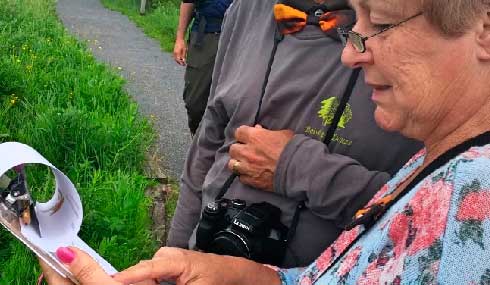
North-American migratorial monarch populations have dramatically diminished over the last 20 years. During the winter of 2014, they reached their lowest overwintering population size in Mexico since the beginning of monitoring that began over twenty years ago. It is estimated that 10 to 15 percent of migratorial monarchs breed in Canada each summer. Until now, Canada’s conservation efforts have mostly focussed on the preservation of fall migration roosting areas along the Great Lakes in Ontario. No detailed scientific knowledge currently exists on Canadian monarch breeding grounds to provide the necessary guidelines for establishing a national conservation management plan to improve their summer reproductive success.
It was initially determined, during the first meeting of the Canadian Monarch Expert panel, that Canada (in its international efforts with Mexico and the United-States to restore the migratorial monarch populations to sustainable levels) should aim to maximize breeding success of migratorial Monarchs in Canada.
This goal led to the following question: Is milkweed availability a limiting factor for monarch’s breeding success in Canada? The issue, however, is that there is currently no data available in to answer this question.
The scientific team behind Mission Monarch came up with a 3 steps approach to gather the necessary information to reach this goal:
- The first step consisted in aggregating into a single database all currently known information on past monarch and milkweed distribution across the country in order to determine realize and potential summer breeding territory in Canada through bioclimatic distribution models.
- The second step is to identify potential regional breeding hotspots by combining the results of step 1 with monarch density estimates from eButterfly monitoring data and national scale land cover and land use change analyses.
- Finally the third step is to conduct on the ground validation of potential monarch breeding hotspots through the Mission Monarch citizen science project.
Migratorial Monarchs breed over a very large territory during the summer in Canada. A territory so vast that it would not be possible for scientists alone to gather a sufficient amount of data to rapidly assess if milkweed availability is a limiting factor to monarch reproduction in Canada. Scientists are calling upon all Canadian citizens to help them validate and refine their research on monarch breeding habitat across the country and ultimately help conserve the migratorial monarch phenomenon.
You can now help scientist gain the knowledge that is necessary in order to conserve the beautiful monarch butterfly, as well as it’s impressive and unique migration. Join Mission Monarch!
